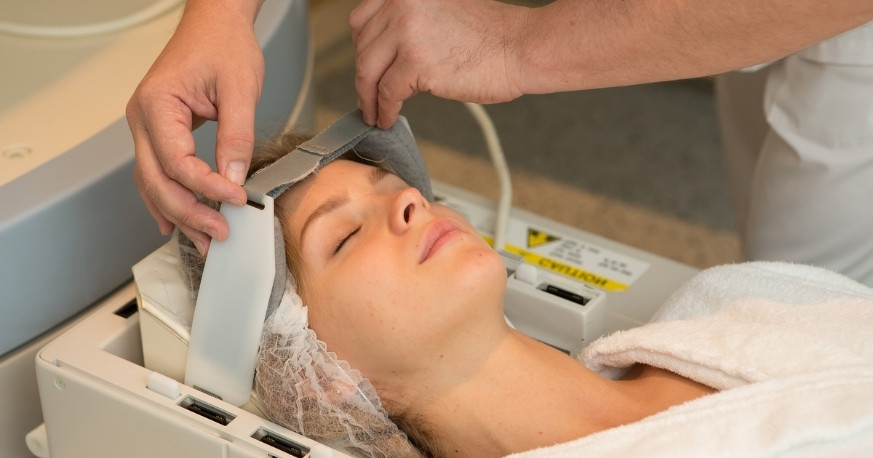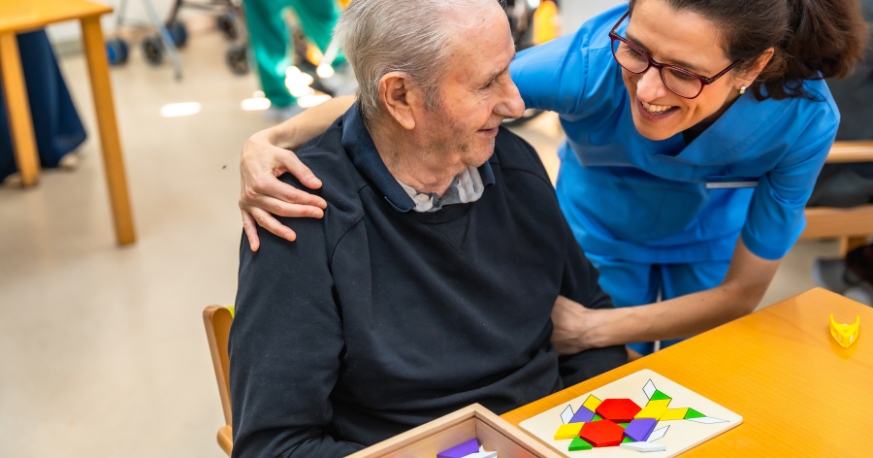10242 Greenhouse Rd #1002 Cypress, TX 77433
How To Control Alcohol Cravings?

Cravings for alcohol can be strong and difficult to manage, especially for individuals trying to reduce or quit their alcohol consumption. Physical, psychological, and social factors often drive these cravings, making it essential to adopt a comprehensive approach to control them.
One innovative treatment that has shown promise in managing alcohol addiction is Magnetic e-resonance Therapy (MeRT). This therapy offers a non-invasive and drug-free method to help reduce cravings and support recovery. In this blog, we’ll explore various methods for controlling alcohol cravings, including how MeRT plays a role in addiction treatment.
About Alcohol Cravings
Alcohol cravings are a strong desire or urge to consume alcohol. They can be triggered by various factors, including:
- Stress: Many people turn to alcohol as a way to cope with stress. When stressed, the body releases cortisol, a hormone that can increase cravings for alcohol as a means of relief.
- Environmental Cues: Situations, people, or places associated with alcohol consumption can trigger cravings. For instance, being at a bar or social event where alcohol is present can evoke a strong desire to drink.
- Emotional States: Feelings of sadness, loneliness, or boredom can lead to cravings as individuals seek comfort or distraction through alcohol.
- Physical Dependence: Over time, regular alcohol consumption can lead to physical dependence, where the body expects alcohol. When alcohol is not consumed, withdrawal symptoms and cravings can occur.
Methods To Control Alcohol Cravings
Controlling alcohol cravings requires a multi-faceted method that tackles addiction’s psychological and physical components. These are a few effective techniques:
1. Mindfulness and Meditation
People who meditate and practice mindfulness might become more conscious of their cravings and learn how to manage them without giving in. People who practice mindfulness learn to notice their thoughts and feelings without passing judgment, allowing them to acknowledge cravings without acting on them.
- How It Helps: By focusing on the present moment and practicing deep breathing techniques, individuals can reduce the intensity of cravings and prevent them from escalating.
2. Healthy Diet and Hydration
Maintaining a balanced diet and staying hydrated may aid in blood sugar stabilization, which can lower cravings. Low blood sugar levels can increase the desire for alcohol as the body seeks a quick source of energy.
- How It Helps: Eating regular, nutritious meals and drinking plenty of water can help prevent the physical triggers that contribute to alcohol cravings.
3. Exercise and Physical Activity
Regular exercise can be a powerful tool in managing alcohol cravings. Endorphins are naturally occurring hormones that are released when you exercise. This can help reduce the desire to turn to alcohol for emotional relief.
- How It Helps: Engaging in activities like walking, running, or yoga can distract from cravings and improve overall mental and physical well-being.
4. Cognitive Behavioral Therapy (CBT)
A type of psychotherapy called cognitive behavioral therapy assists patients in recognizing and altering unfavorable thinking patterns and behaviors that lead to alcohol use.
- How It Helps: CBT can teach individuals how to cope with triggers, manage stress, and develop healthier coping mechanisms, reducing the likelihood of giving in to cravings.
5. Support Groups
Joining a support group, like Alcoholics Anonymous (AA), may offer a feeling of accountability and camaraderie. exchanging experiences with those facing comparable obstacles can be incredibly beneficial.
- How It Helps: Support groups offer a safe space to discuss struggles, share coping solutions, and receive encouragement from others who understand the difficulties of overcoming addiction.
The Role of Magnetic e-Resonance Therapy in Controlling Alcohol Cravings
Magnetic e-resonance Therapy is an emerging treatment that has shown promise in helping individuals manage alcohol cravings and addiction. This therapy involves the use of magnetic fields to activate particular brain regions that are involved in addiction and craving processes.
How Does It Work?
MeRT uses personalized magnetic stimulation to target brainwaves that are disrupted in individuals with addiction. The therapy aims to restore normal brainwave activity. This may assist in lessening the severity and occurrence of alcohol cravings.
- Targeted Brain Stimulation: MeRT focuses on parts of the brain linked to addiction, namely the prefrontal cortex, responsible for controlling impulses and decision-making. MeRT can lessen the desire to drink by restoring normal brain activity in certain regions.
- Personalized Treatment: One of the main benefits of MeRT is its ability to customize treatment to match each person’s particular brainwave patterns.
- 4oThis tailored method guarantees that the care is as effective as possible for each person.
- Non-Invasive and Drug-Free: MeRT is a non-invasive treatment that doesn’t involve taking medicine, which makes it a desirable choice for those who prefer a drug-free approach to managing addiction.
Benefits of This Therapy in Alcohol Addiction Treatment
- Reduction in Cravings: MeRT has been shown to significantly reduce alcohol cravings in individuals undergoing treatment, making it easier for them to maintain sobriety.
- Improved Mental Clarity: By normalizing brainwave activity, MeRT can aid in enhancing mood, mental health, and general mental clarity, reducing the likelihood of relapse.
- Enhanced Recovery: MeRT can be used in conjunction with other therapies, such as CBT or support groups, to enhance the overall effectiveness of addiction treatment.
Managing Triggers and Avoiding Relapse
In addition to the solutions and treatments mentioned above, it’s essential to develop a plan for managing triggers and avoiding relapse. Here are some tips:
1. Identify Triggers
The first step to controlling your urges is figuring out what sets them off. Maintain a journal to track situations, emotions, or people that prompt the desire to drink.
- How It Helps: By recognizing triggers, you may create coping mechanisms or avoidance tactics, which will lessen the chance that you will give in to desires.
2. Develop a Support Network
Surround yourself with supportive friends and family members who understand your goals and can offer encouragement.
- How It Helps: A strong support network might inspire you and aid in keeping you responsible for your recovery goals.
3. Create a Relapse Prevention Plan
Work with a therapist or counselor to develop a detailed relapse avoidance technique. This plan must provide methods for handling high-risk situations, managing stress, and maintaining sobriety.
- How It Helps: Having a plan can help you overcome obstacles and maintain your progress, even in challenging situations.
Controlling alcohol cravings is a challenging but achievable goal with the right plan and support. Incorporating mindfulness, exercise, healthy eating, therapy, and support groups can significantly reduce cravings and support long-term sobriety.
Magnetic e-resonance Therapy (MeRT) is a promising treatment that helps reduce cravings and improve mental clarity. This makes it easier for individuals to overcome alcohol addiction.
If you or someone you know is struggling with alcohol cravings, consider MeRT as part of a comprehensive treatment plan. By addressing both the psychological and physical aspects of addiction, you can control your cravings and work towards a healthier, alcohol-free life.




